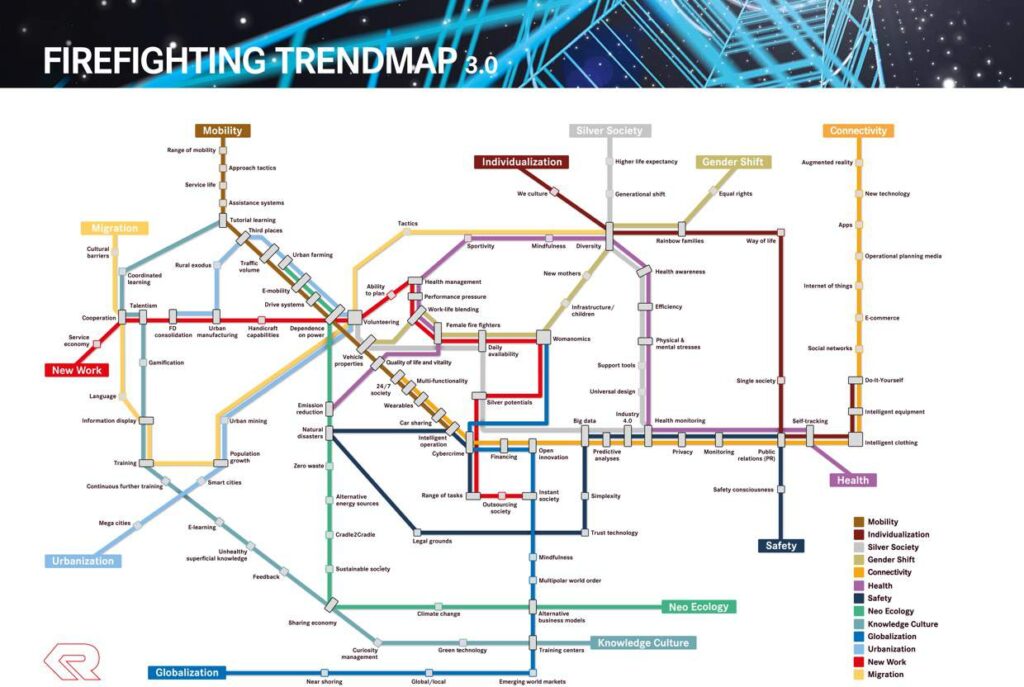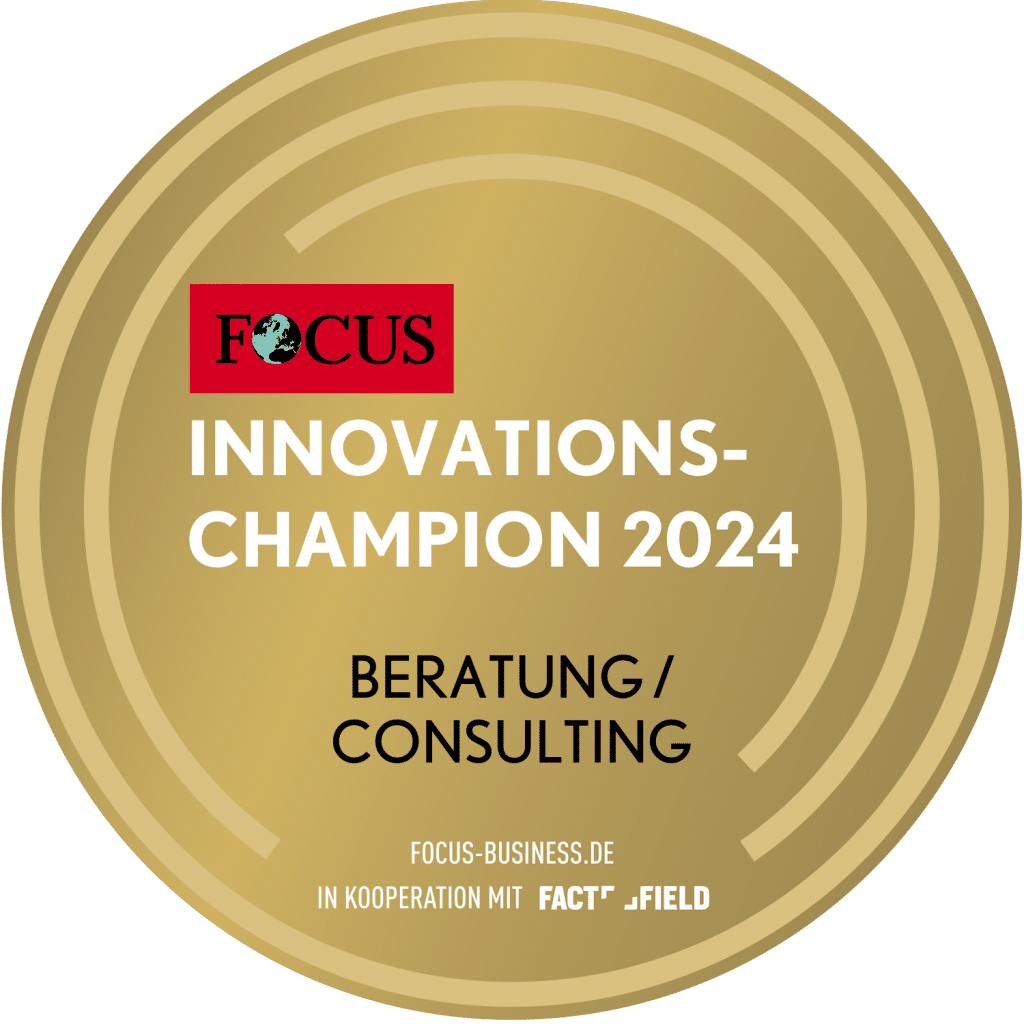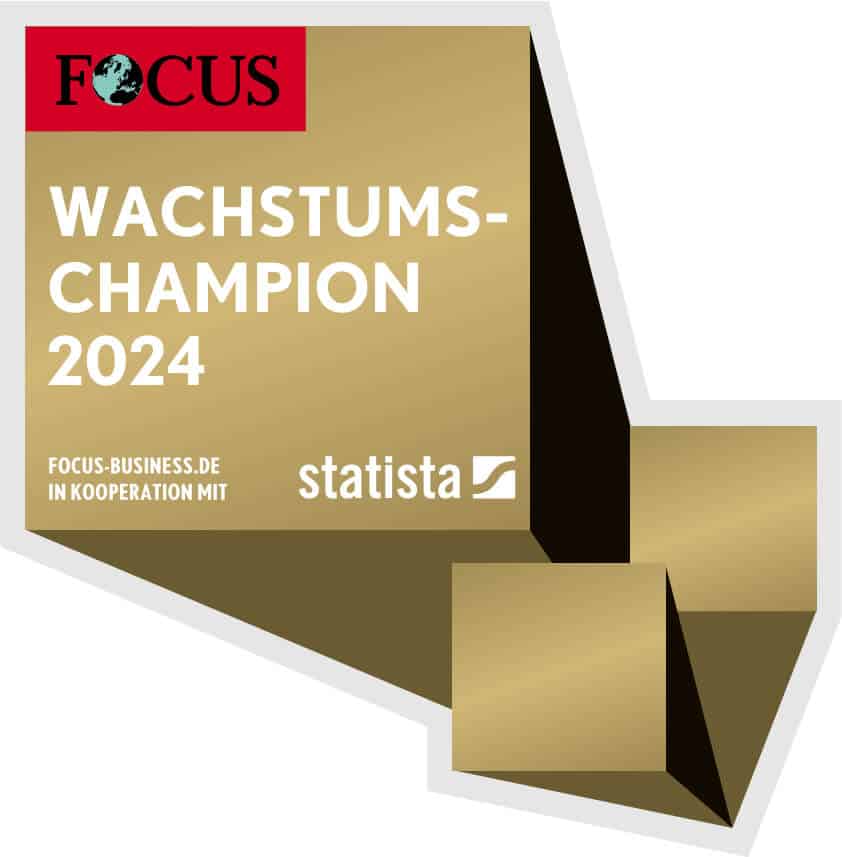"Trend to Ability" (t2a) is a method developed by TCI consultants on the basis of project experience, which is used to derive the required business capabilities from the trends relevant to a company. The entire range of trends is taken into account, from megatrends to technical trends. The aim is to identify the capabilities that are necessary to make sustainable use of trends in the industry-specific value chain of companies. This article deals with the concrete implementation of the Trend to Ability method. To this end, we break down the procedure into five steps, present prime examples of Trend to Ability projects that have already been implemented and highlight the potential in terms of visualization and possible applications.
Step 1: Identification of relevant trends
In our blog post "Business capabilities - the key to adapting to trends", we described the types of trends that affect companies. The first step is to determine where a trend or one of its sub-trends "starts" in a company's business model. Based on the St. Gallen business model of the information age, a trend can start at the strategy, business process and technology/IT levels. The effects of trends are usually cross-level. It is then necessary to consider the level of maturity of the corresponding capabilities in the company at the respective starting point.
Only if the respective influence of the trend on relevant company processes is high and the discrepancy between the company status and the state of the art is relevant will the trend and the influenced process be considered further. These are the levers that can be used to "calibrate" change processes. Trends for which there are no corresponding processes in the company yet require special consideration.
Step 2: Derivation of the company-specific trend map
If the results are consolidated at trend level, a company-specific trend map can be generated. This will depict corresponding trends with their sub-trends in lines similar to a subway map. Nodes are created by intersecting different trends with their sub-trends. The nodes represent sub-trends that are components of several trends.
An illustration of this type of trend map is shown in the fire department trend map created by Rosenbauer:

Step 3: Mapping trend against processes
In the first step, the intersections of trends with processes, business models and IT were defined as nodes in the sense of overarching adjusting screws. In the next step, the possibilities for "fine-tuning" are examined in more detail at sub-process and sub-trend level and a vote is taken on the importance and design options. The two key questions here are:
- Where is there a need for action?
- What effect does a change to this node have if something is changed?
The result is documented in a matrix.
Step 4: Derive the required skills
The required skills are now determined for the adjusting screws identified in the previous step. A suitable example is the Megatrend individualization / Mass Customization:
The company wants to offer a product with different variants in order to be able to offer a differentiated range on the market. The fourth step of the Trend to Ability method results in the following process:
- Product development aims to develop a product with a wide range of variants.
- Product development wants to secure a product with many variants virtually in order to reduce the number of physical prototypes and shorten the development time.
- Product development wants to map a multi-variant product in PDM in order to document the development and make the data available to downstream departments.
- The sales department wants to configure a product with many variants in order to optimize the sales process.
At this level, time requirements and expenses can already be roughly estimated. Synergy effects also become visible. This is an important basis for the next step.
Step 5: Roadmap and planning
This step begins with the prioritization of skills. When prioritizing, the commonly used 50-30-20 rule should be applied. Adapted to the topic of capability management, this means that 50 percent of time and budget should be invested in the development of very important capabilities, 30 percent in the development of important capabilities and 20 percent in the development of less important capabilities.
The prioritized capabilities can be visualized in a roadmap. The roadmap contains a quarterly or monthly definition of which capability will be available at what time. This is not project planning, but the basis for project planning, which can now take place.
On the one hand, planning must always consider the sum of all sub-skills that are necessary for a skill as a whole. On the other hand, new projects cannot be started for all skills. Therefore, the following is considered:
- What needs to be implemented as a project?
- What else can be integrated into existing projects?
- What can be integrated into the line?
In the case of IT measures, these questions arise accordingly:
- Where is a change to an existing system sufficient?
- Where do I have to wait for a new release?
- Where is there still no IT solution?
Experience with the Trend to Ability method
In 2014 and 2015, Coca-Cola Erfrischungsgetränke AG (CCEAG) carried out a "From Trend to Capability" process lasting several months. This was initiated by the CIO and CTO and led by the Enterprise Architecture Manager (EAM). The aim was to develop the future capabilities required by the business solution organization and its services.
At the start, the business trends that were recognizable for the company as a whole were recorded. These were identified through a detailed survey of relevant managers. The business trends identified in this way were then, together with the managers, mirrored and compared against the technology trends of the Gartner Hype Cycle and the megatrends of the Zukunftsinstitut. This comparison resulted in a Coca Cola-specific trend map with a total of 56 relevant trends, divided into six trend areas.
In a workshop with all managers of the business solution organization, these trends were examined for their impact on and requirements for processes and IT systems. The results were summarized and described as capabilities in a predefined syntax. For each IT-related capability, it was added whether it could be implemented as part of foreseeable release changes, for example, or whether there was not yet a suitable basic application. This assessment should help to create a roadmap to ensure that the required capabilities are available in good time.
CCEAG did not see any disruptive changes to its core business model. Nevertheless, the entire fast-moving consumer goods (FMCG) market is facing enormous challenges, for example due to changes in route-to-market strategies, the individualization of logistics and consumer data and digitalization approaches in all sales channels. Even the "brown soda" is becoming more digital, processes more agile and consumer behavior more difficult to predict.
The HR department involved therefore also had a keen interest in the results. After all, new employees should not be recruited with a view to skills that are required today but will be obsolete tomorrow, but with a view to future skills. The same objective applied to the personnel development of the existing workforce.
Trend to Ability and its possible applications
The theoretical-schematic outline of the approach in five steps and the various practical examples demonstrate how comprehensively the t2a method can be used. It is suitable both for the analysis of individual mega trends and for the analysis of all trends that affect a company.
We recommend starting with one or two trends to familiarize yourself with the method: this way, you will first gain a necessary feel for the Trend to Ability method for your company, acquire a certain routine and thus work systematically towards securing the future viability of your company.
(Cover image: © Patrick Müller / Background: © SceneNature | AdobeStock)


